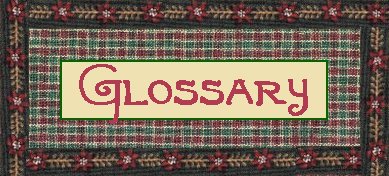| Album
Quilt
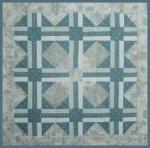
|
A
quilt made up of different blocks, sewn by a group of friends to
present as a special friendship or memory quilt. They usually
have signatures and notations. They are also known as Friendship
or Signature quilts. Appliqué versions are known as Baltimore
Album quilts. More info |
| Amish
Quilt
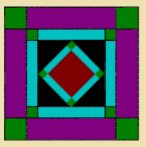
|
These
quilts use large, simple geometric shapes, sewn with vivid jewel
tone and black solid fabrics. The hand quilting is the highlight
of the quilt. Based on traditional designs by the Amish. More
info |
| Anchor
Cloth |
A
scrap piece of fabric* sewn through, before and after chain
piecing.
It anchors the threads and prevents the machine from eating
up the edges of your fabric.
*Or stitch
over an Anchor
Cloth Project! |
| Appliqué
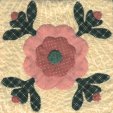
|
This
technique involves applying fabric shapes onto a background
fabric. There are many different methods that can be used to
achieve this. |
| Background
Fabric

|
The
fabric used as the background to appliqué shapes or the patches
that will appear as the background in pieced blocks. |
| Backing |
The
bottom or back layer of a quilt. Traditionally plain, currently
quilter's are using print fabrics that match the front, knowing
other quilters' will turn it over.
Quilt
Backing Ideas |
Baltimore
Album Quilt
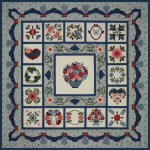
|
These
are album
quilts
made using pictorial blocks, sewn with detailed appliqué. More
info |
| Bargello
Quilt
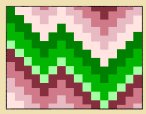
|
A
style of quilt piecing, based on the Bargello needlepoint. The
many strips of rectangles are arranged offset to wave across the
quilt top. |
| Basting |
Temporarily
securing the three layers of the quilt
sandwich.
Traditionally done with long running stitches, currently quilters'
also use safety pins, plastic quilt tacks and spray adhesive. |
| Basting
Stitch |
Long
running stitches used to temporarily hold the fabric in place.
They are removed after the sewing or quilting is complete. |
| Batik

|
This
fabric is dyed over wax resist in simple patterns. |
| Batting |
The
center layer of the quilt. Currently quilters' use cotton or
polyester batting which is available in different flat to fluffy
lofts.
Traditionally wool and flannel were also used. |
| Beeswax |
It
was traditionally used to strengthen thread for hand quilting.
Though it is not required when using quilting thread, it can
strengthen regular sewing thread, if you need to match a colour
not available in quilting thread. |
| Bias
Grain |
The
diagonal (45°) direction along the fabric which has stretch.
Care should be taken when cutting and sewing on the bias grain. |
| Bias
Stems |
Strips
of fabric cut on the bias and sewn in half lengthwise. They are
used for curved stems in appliqué and to outline Celtic
designs. |
| Big
Stitch |
Longer
running stick using perle cotton in a contrasting colour. |
| Binding |
Thin,
double-folded strip of fabric that finishes the edges of a
quilt. |
| Blind-Stitch

|
The
stitch used to appliqué and to finish the binding. This stitch
is almost invisible. |
| Block
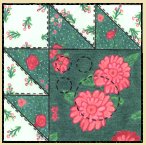
|
The
main part of a quilt top. Usually square, they can be appliquéd,
pieced (made up of units and patches) or plain. |
| Blocking
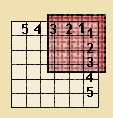
|
A
method for squaring up a block, unit or patch. Sewing on the
line drawn allows for a more accurate finished quilt top. |
| Bluework |
See
Redwork. |
| Borders |
Fabric
strips (pieced, appliquéd or plain) that are used to frame the
center part of the quilt. |
| Broadcloth
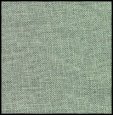
|
A
lightweight, plain weave cotton fabric in solid colours. It has
a slight crosswise rib and a lustrous surface resembling poplin. |
| Broderie
Perse |
This
appliqué technique uses floral print fabrics, usually
re-arranged into a bouquet design. |

